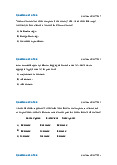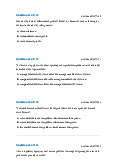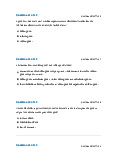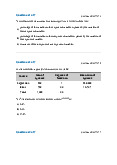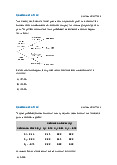


Preview text:
Lời mở đầu
In today's international context, when the integration process is accelerated,
multilateral diplomacy plays an important role, contributing to improving the
international status of the country in the world, the accession in international
organizations is getting more and more attention.
The International Monetary Fund (IMF) and the World Bank are institutions in
the United Nations system, the largest intergovernmental organization in the world.
They share the same goal of raising living standards in their member countries. Their
approaches to this goal are complementary, with the IMF focusing on macroeconomic
and financial stability issues and the World Bank concentrating on long-term
economic development and poverty reduction.
Therefore, our group brings the topic "General Information about IMF and
WB" to help all of you better understand the origin, operation process, achievements
as well as the difficulties that these two international organizations had to face in the
process of ensuring macroeconomic stability. Chapter 1: History
The World Bank and International Monetary Fund (IMF) were created at the
end of World War II by the U.S. and British governments, at an international
conference convened in Bretton Woods, New Hampshire, United States in July 1944,
and were established as part of the Bretton Woods Agreement in 1945. The Bretton
Woods Agreement was a monetary and exchange rate management system that
attempted to encourage international financial cooperation through the introduction of
a system of convertible currencies at fixed exchange rates, with the dollar trading for gold at $35 per ounce. 1.1.
The reason of Bretton Woods Conference
In the 19th century, the gold standard was introduced around the world, fixed
the value of the currency in terms of gold, and set a fixed exchange rate in order to
reduce the risk of trade between countries. However, after World War I and the Great
Depression of the 1930s, a floating exchange rate stopped the flow of free trade
between countries, the gold standard collapsed completely. Under these
circumstances, 730 delegates from 44 countries met at Bretton Woods, New
Hampshire, in 1944 to build the world financial system after the war, avoiding the risk
of a recurring economic crisis. 1.2. The Bretton Woods Conference
In the meeting, the countries have realized valuable lessons in the period
between the two world wars. That is, many of the assets listed on the balance sheets at
banks around the world are insolvent, which led to the banking crisis in 1931.
Secondly, the insistence of creditors to claim compensation for war, the formation of
isolationism, beggar my neighbour policies through the domestic currency devaluation
to boost exports, leading to the collapse of the global financial system and global economic recession.
All countries agreed that the free world economic system needs the
intervention of the Government. However, the intervention of the Government in the
period between the two world wars led to a tendency to isolate, seriously affected
international trade, and led to a series of beggar my neighbour policies such as: high
tariffs, the domestic currency devaluation, the collapse of the world financial system
and political instability, leading to the World War II.
Vào thế kỉ 19, chế độ bản vị vàng được áp dụng trên toàn thế giới, cố định giá trị đồng
tiền theo vàng, thiết lập tỷ giá hối đoái cố định nhằm làm giảm thiểu rủi ro về thương
mại giữa các nước. Tuy nhiên, sau Chiến tranh thế giới thứ nhất và cuộc Đại khủng
hoảng của những năm 1930, tỷ giá hối đoái thả nổi xuất hiện đã chặn đứng luồng
thương mại tự do giữa các nước, chế độ bản vị vàng sụp đổ hoàn toàn. Trong hoàn
cảnh đó, 730 đại biểu đến từ 44 quốc gia đã gặp nhau tại Bretton Woods, New
Hampshire, năm 1944 để để xây dựng hệ thống tài chính thế giới sau chiến tranh,
tránh nguy cơ tái diễn khủng hoảng kinh tế.
Tại hội nghi, các nước đều nhận ra được những bài học đắt giá trong thời kỳ giữa hai
cuộc chiến tranh thế giới. đó là việc nhiều tài sản kê khai trên các bảng cân đối tài sản
tại các ngân hàng trên thế giới là các khoản nợ không thể trả, điều này dẫn tới khủng
hoảng ngân hàng năm 1931. Thứ hai, việc chủ nợ kiên quyết đòi bồi thường chiến
tranh, hình thành chủ nghĩa cô lập, chính sách làm nghèo hàng xóm thông qua việc
phá giá đồng nội tệ để thúc đẩy xuất khẩu, dẫn tới đổ vỡ hệ thống tài chính toàn cầu
và suy thoái kinh tế toàn cầu.
Các nước đều nhất trí rằng hệ thống kinh tế thế giới tự do cần có sự can thiệp của
Chính phủ. Tuy nhiên, sự can thiệp của Chính phủ trong thời kỳ giữa 2 cuộc chiến
tranh thế giới lại dẫn tới khuynh hướng cô lập, gây ảnh hưởng nghiêm trọng tới
thương mại quốc tế, kéo theo một loạt chính sách làm nghèo hàng xóm như: thuế quan
cao, phá giá đồng nội tệ, gây đổ vỡ hệ thống tài chính thế giới và bất ổn chính trị, dẫn
đến cuộc chiến tranh thế giới thứ hai
